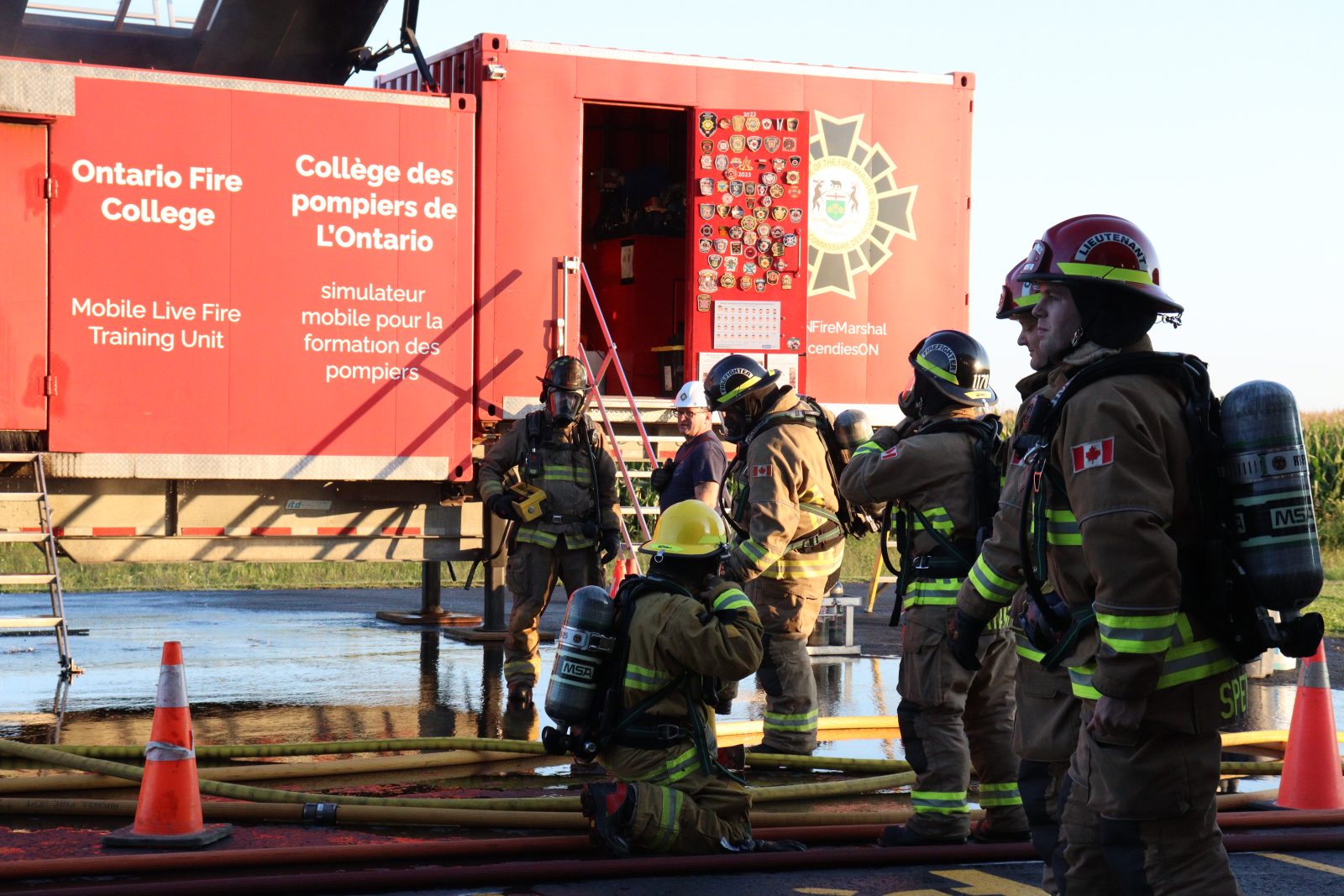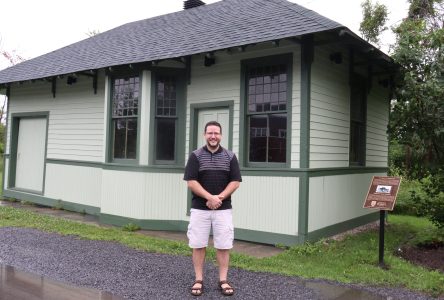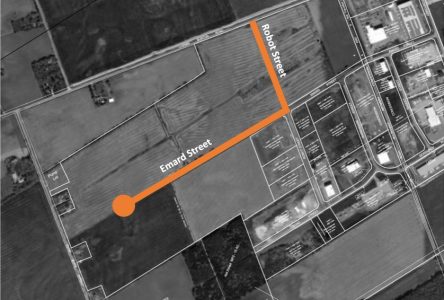Russell Township Fire Services hosted the Ontario Fire Marshal’s Office (OFM) Mobile Live Fire Training Unit (MLFTU) at Station 11 in Embrun last week, giving local firefighters a new set of skills for keeping the community safe.
The MLFTU is a propane-fueled live-fire simulator, managed and funded by the OFM. The simulator is designed to build on crucial firefighting skills, including fire suppression, pumper operations, and incident management systems.
Funded by the province, the mobile training unit moves from municipality to municipality to ensure accessible training throughout the 441 fire stations across Ontario. The two units are customizable, with adjustable walls and configurations to simulate various scenarios. The goal is to give firefighters the ability to train at home with familiar equipment and team members.
Applying a year in advance, the firefighters on Station 11 and 12 were able to run multiple simulations over the course of the week.
“With this type of model, it’s the best way to get training in your backyard for your firefighters,” said Fire Chief Brian McBain. “Normally, we go to Bourget to get our training, but I can’t send 50 firefighters over there at the same time. And we need people to stay and take care of the trucks if they need to leave. The calls don’t stop.”
Having this simulator in Embrun for a week allowed other fire departments to attend the same training. Firefighters from Casselman, Champlain, Hawkesbury, East Hawkesbury, North Stormont, Ottawa and South Glengarry Fire Departments took part over the week.
What is the MLFTU?
Equipped with an on-board generator and a supply of gas cylinders, the MLFTU can operate without external supplies. The second story of the training unit can be hydraulically raised during operation and lowered for transport.
During the training simulations, firefighters are placed in front of real flames, extreme heat, high humidity, restricted visibility, and thick smoke. This allows them to train for an emergency as realistically as possible while being monitored in case of an emergency.
Typical fire scenarios include kitchen, bed/couch, wall fire, and rollovers.
Despite the extreme heat, the MLFTU is designed for safety during training. Safety devices are installed within the unit to monitor gas and temperature in accordance with the National Fire Protection Association and Canadian Standards Association codes and guidelines. If the limits set in place are exceeded or the emergency cut-off switch is operated, the system is automatically switched off and forced ventilation is activated.
With the training week over, Station 11 and 12 must apply this year in the hopes of obtaining one of the two available units in 2025.



